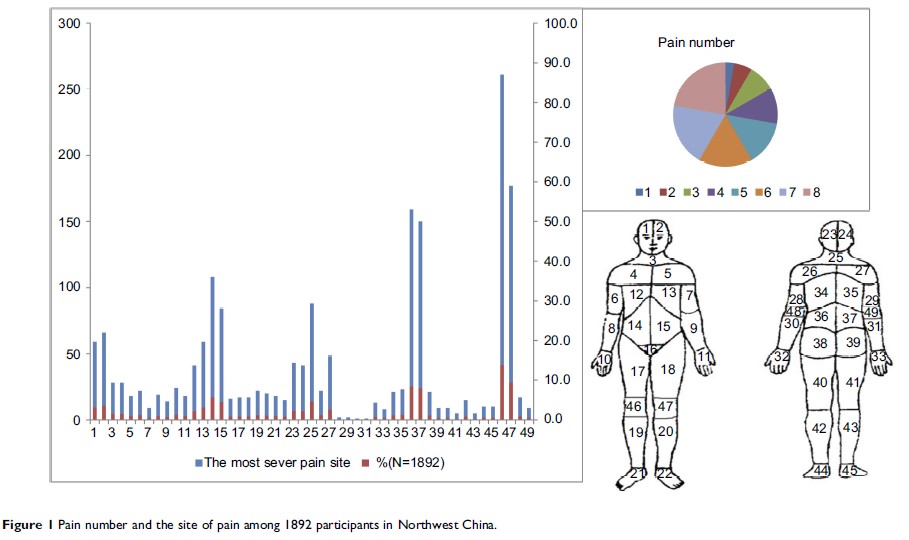9 0 8 1 0
论文已发表
注册即可获取德孚的最新动态
IF 收录期刊
- 2.6 Breast Cancer (Dove Med Press)
- 3.9 Clin Epidemiol
- 3.3 Cancer Manag Res
- 3.9 Infect Drug Resist
- 3.6 Clin Interv Aging
- 4.8 Drug Des Dev Ther
- 2.8 Int J Chronic Obstr
- 8.0 Int J Nanomed
- 2.3 Int J Women's Health
- 3.2 Neuropsych Dis Treat
- 4.0 OncoTargets Ther
- 2.2 Patient Prefer Adher
- 2.8 Ther Clin Risk Manag
- 2.7 J Pain Res
- 3.3 Diabet Metab Synd Ob
- 4.3 Psychol Res Behav Ma
- 3.4 Nat Sci Sleep
- 1.9 Pharmgenomics Pers Med
- 3.5 Risk Manag Healthc Policy
- 4.5 J Inflamm Res
- 2.3 Int J Gen Med
- 4.1 J Hepatocell Carcinoma
- 3.2 J Asthma Allergy
- 2.3 Clin Cosmet Investig Dermatol
- 3.3 J Multidiscip Healthc

中国西北地区社区成年人的疼痛相关危险因素
Authors Guo J, Fu M, Qu Z, Wang X, Zhang X
Received 7 November 2018
Accepted for publication 2 May 2019
Published 2 July 2019 Volume 2019:12 Pages 1957—1969
DOI https://doi.org/10.2147/JPR.S193773
Checked for plagiarism Yes
Review by Single-blind
Peer reviewers approved by Dr Colin Mak
Peer reviewer comments 2
Editor who approved publication: Dr Erica Wegrzyn
Objectives: We aimed to investigate the prevalence of and risk factors associated with pain and to compare the correlation between depression and sleep quality and pain among adults in Northwest China, where health care resources are limited.
Methods: In total, 7,602 subjects (age ≥40 years) participated in this survey. Using the Brief Pain Inventory-Chinese version, we evaluated the overall pain among respondents, including pain sites, pain intensity, and its interference in daily life. In addition, depression symptoms were measured using the Center for Epidemiologic Studies Depression Scale Chinese edition. Furthermore, the subjective sleep quality among participants was assessed using the Pittsburgh Sleep Quality Index.
Results: Approximately 25.2% of the participants experienced pain, and 41.7% of those perceived the worst pain they had experienced as severe pain. Chronic disease exhibited the most robust correlation with severe pain, followed by poor sleep quality. Furthermore, the correlation between depression and pain was found only in the population with severe pain.
Conclusion: The study reveals that pain affects a large proportion of Chinese adults, especially females, living in rural areas, having lower incomes, unemployed, and suffering from poor health status or mental illness. Furthermore, this study suggests we should have a screen and intervention for depression and poor sleep quality among pain suffers, which will be helpful for pain management in Northwest China.
Keywords: pain, depression, sleep quality
